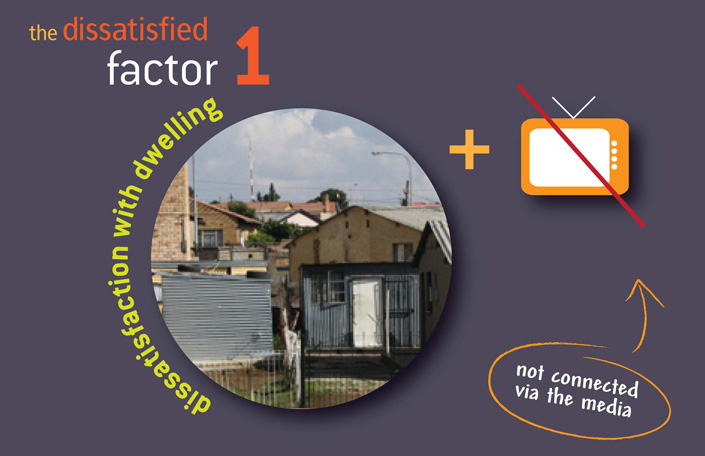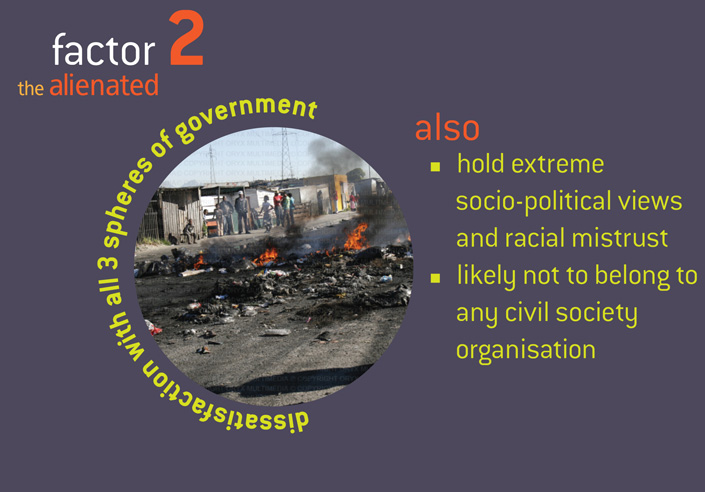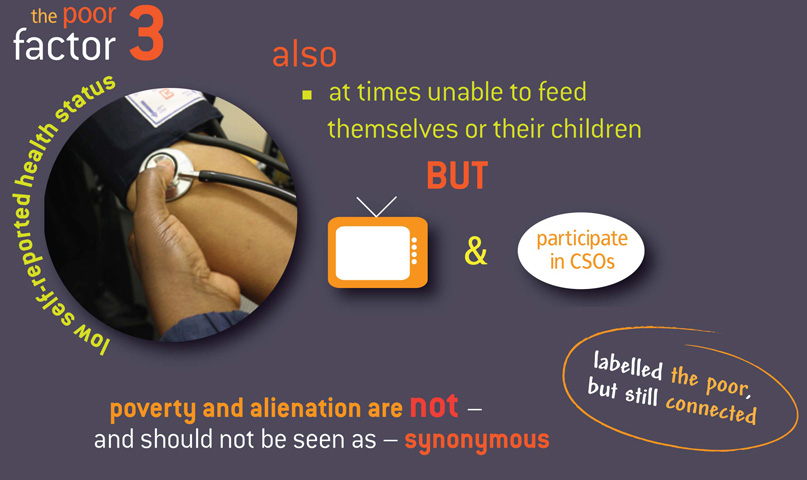
| introduction |
| profiling the marginalised |
| key policy goals |
| understanding the data | ||
In order to better understand the sets of relationships among the data, we ran a factor analysis of the ten dimensions of concern. Factor analysis is a technique that looks for relationships among variables and may find that two or three observed variables (such as those in our index) in fact represent a new variable (an ‘unobserved variable’) – a set of relationships that would normally not be identified through standard cross-tabulations, correlations and so on. Factor analysis searches for these hidden relationships in order to unearth these new variables. The analysis suggested three factors within the variables in the marginalisation index. Firstly, it identified a group who loaded high on dissatisfaction with their dwelling, were disconnected (had no TV or radio or internet) and were generally dissatisfied or highly dissatisfied with their lives. These three dimensions all loaded high on the factor, suggesting that dwelling type is related to connectedness and to general (dis)satisfaction, a grouping that is visually suggestive of people living in shacks on the fringes of the city-region, but shut out of it. |
||
 |
||
The second factor identified a grouping that is best described as ‘the alienated’. The factor found that those who were deeply dissatisfied with all three spheres of government, were also likely to hold extreme socio-political views, and were also likely not to belong to any civil society organisation. In this group, government is disregarded, alienation and anomie feature strongly alongside racial mistrust and suspicion of the political and administrative systems of the state, and combine with isolation from civil society. |
||
 |
||
| The third factor was fascinating, because it suggested that respondents scoring high on ‘hunger’ (i.e. were skipping meals themselves and/or were unable to feed their children) were also likely to have low self-reported health status – but (in two negative loadings) were connected via the media and were participative via civil society organisations. Labelled ‘the poor’, the factor reminds us that poverty and alienation are not and should not be seen as synonymous. | ||
 |
||
| These factors suggest possible analytic categories that lie beneath the marginalisation index; a way of understanding relationships or describing linkages hinting that different approaches are needed with people falling into these different categories. | ||
